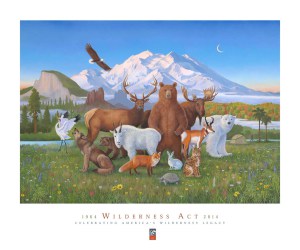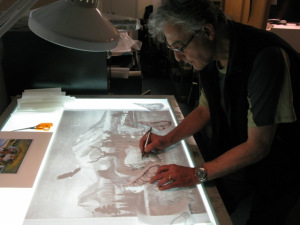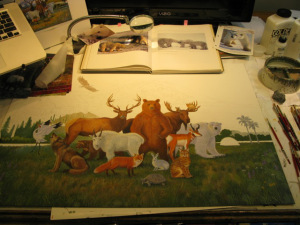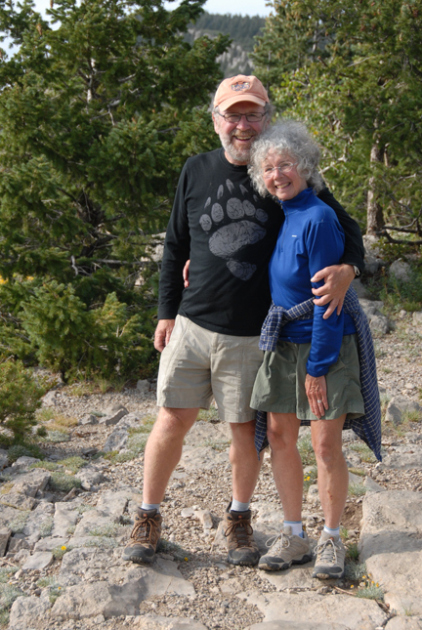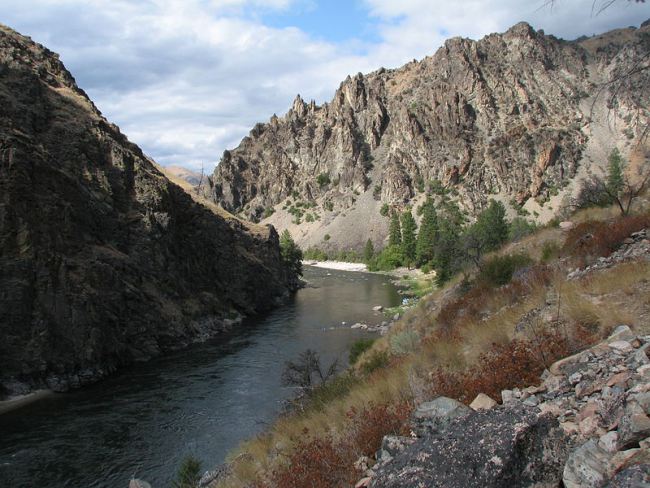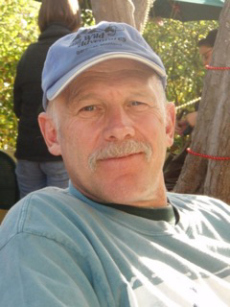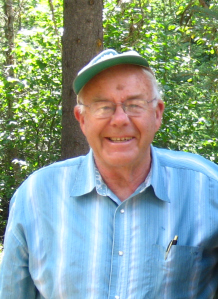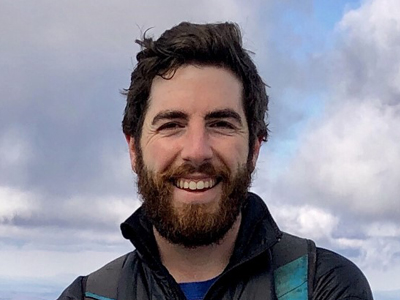 by Andrew Hursh
by Andrew Hursh
Would a modern Bob Marshall drive a Tesla to the trailhead?[i] Motors of any propulsion certainly drove him and other early leaders of the Wilderness movement out of the woods and into public advocacy.[ii] In 1901, when Marshall was born, only some 14,000 automobiles were registered in the United States. By his untimely death in 1939, there were over 31 million.[iii] The Wilderness Society founder’s life and core mission reflect a conservationist’s reaction to a great environmental challenge of his era, the zeal with which we roaded up so much of our undeveloped, wild country in so short a time.
Today, the hallmark of environmentalists is less notably their backcountry boosting and more commonly which vehicle they buy.[iv] A cynic might bemoan that this twist in attitudes betrays a loss, with the shift into the twenty-first century, of the Wilderness values so remarkably celebrated in the clutch of the twentieth. Perhaps, however, it’s a change that instead reflects a reaction to one great environmental challenge of our era, climate change. Consider these dates: Howard Zahniser, primary author of the Wilderness Act of 1964, died that same year, mere months before he could have witnessed President Johnson sign the bill into law.[v] Next, in 1965, Johnson had his science advisory committee evaluate other ecological issues with a report on “Restoring the Quality of Our Environment.”[vi] In the early pages of that report sits perhaps the earliest recognition in the US government of the greenhouse effect and the atmospheric impact of fossil fuels.[vii]
The coming sea change in the way we grapple with our effects on the natural world thus occurred lamentably late for us to gain the perspective of the architects of the Wilderness Act on the ramifications of climate change. As a result, today’s wilderness advocates are divided. Faced with the reality of how far-reaching our impacts on the natural world are, renewed debate has livened questions about what Wilderness means and when and how wilderness character should be compromised in the name of climate change mitigation and adaptation. From assisted migration to thinning, burning and replanting to other biological controls, the impulse to manipulate ecosystems in our National Wilderness Preservation System (NWPS) grows stronger along with our understanding of ways we may have inadvertently affected them. At the same time, generational shifts in thinking may exhibit erosion of the wilderness ethics that championed the original creation of the NWPS. Politically hyper-focused on climate change and broad-scale ecological concerns, some people may see wilderness areas more as venues for adventure sports than as temples to humility in the face of nature. Many otherwise conservation-conscious advocates simply misunderstand or have never learned what, and why, the NWPS is.
From intervention-minded managers to globally-minded millennials, what do these shifts in thinking mean for resolving the principled vision described by Howard Zahniser and those that shaped our original wilderness movement? There’s a reason that Zahniser favored a phrase like “Guardians not Gardeners”; although his writing predated certain complex dialogues about climate change, the foundations of wilderness ethics contain guidance for why we should exercise restraint and how to rescue wilderness—the ideal and the real, untrammeled landscape—in the modern era. Perhaps climate change presents the perfect test of our humility and an opportunity to reinvigorate the original reasoning for leaving the wild alone. Perhaps, as our developing knowledge leads us to lament the reach of human damage, we may reeducate ourselves about the cultural, scientific, ecological, and ethical reasons for leaving wilderness areas unmanipulated any further. “In wilderness,” Zahniser noted, “we should observe change and try not to create it!”[viii]
The key definitional phrase in the Wilderness Act calls for areas in the NWPS to be those “where the earth and its community of life are untrammeled by man.”[ix] That word choice is monumental and has caused much consternation among those who have tied some thread of their lives to this venerable resource. The problem arises when the Act “further defines” wilderness, using the phrase “primeval character” and calling for management “to preserve its natural conditions.”[x] In recent years, certain voices in Wilderness conservation have erected a perceived “paradox” or conflict in the Act’s mandate to preserve wilderness character, contending that “natural conditions” and “untrammeled” are management goals that can be at odds with one another.[xi] Some have expressed a belief that natural conditions should be defined by certain desired ecological baselines (some “primeval” analogue, or often even recent data points). When these have changed as a result of human influence, pursuit of their reconstruction then threatens our call to safeguard “untrammeled” wilderness character. Consider the following real-life example: as an unintended consequence of decades of fire suppression, there is some evidence that certain now-dense forests have lost their historical resilience to high-intensity wildfires. Should we step in and intensively restore these woods to a thinner density, through prescribed burning or silvicultural treatment? People with a perspective favoring action often see “trammeling” in such cases as an acceptable means of recreating a certain vision of “natural.” Consequently, numerous such proposals have come forward, among the most recent including the 19,000-acre Trinity Alps Wilderness Prescribed Fire project that was submitted for public comment in late July 2019.[xii]
A recent study evaluated the fire mitigation situation described above, noting that “restoration of altered fire regimes is a frequently cited justification for intervention in protected areas, including wilderness.”[xiii] The authors assessed a number of assumptions that must be made by managers inclined toward intervention, ranging from how variable historic fire regimes truly were, to the factors at play in the present forest conditions, to the likely response of the ecosystem to treatment. For each of these, the researchers found that “the scientific evidence at hand is not consistent with the assumptions that might be used to justify wilderness intervention.”[xiv] Additionally, note that USFS directives create a framework for evaluating manipulations. Among the criteria are that “there is a reasonable assurance that the project will accomplish the desired objectives” and that a “pilot study should take place in a comparable area outside of wilderness if possible.”[xv]
Faced with these criteria and a lack of definitive science on cause and effect with regard to forest conditions and fire, how could one possibly justify human intervention in such a case, compromising the untrammeled nature of the wilderness? As the authors of the above study concluded when recommending more restrained deliberation, “intervention proposals often lack the detail required to evaluate either the magnitude of the ecological threat or the likelihood that intervention will be successful.”[xvi] Nonetheless, all four of the agencies that manage lands in the NWPS have shown an openness toward ecological manipulations. Researchers at the Aldo Leopold Institute recently conducted a survey of wilderness interventions among BLM, USFS, NPS, and FWS managers, coming to the following conclusion: “landscape-scale actions in wilderness are happening across all agencies, for diverse reasons, across all geographic regions within the United States, and in both large and small wildernesses. Given changing climate patterns and documented ecological changes, more proposals to intervene are likely inevitable.”[xvii] Indeed, a Forest Service briefing paper recently noted that “climate change will force a reassessment of wilderness stewardship goals and objectives.”[xviii] While acknowledging the need to take special care to better define desired intervention outcomes and scientific reasons for limiting the practice, the document also stated that responding to climate change “will require compromise between such competing values as biodiversity conservation and the desire to leave nature alone” and that “the boundaries between wilderness and surrounding lands must be made more porous if ecosystems are to respond appropriately to climate change.”[xix] On the ground, the temptation towards active mitigation, a phenomenon researchers have coined “action bias,”[xx] often wins over. In a 2011 USDA report on adaptation to climate change in national forests, to “reconsider definitions of wilderness” is floated as a strategic option.[xxi]
Such reconsideration would of course be troubling to those who cherish wilderness. Leaders at Wilderness Watch in particular have argued that protecting “wildness” has always meant unifying the concepts of “natural” and “untrammeled,” each meant to support the preservation of areas that develop and change as nature sees fit in the absence of direct human influence and human intent.[xxii] This would best further our hard-fought wilderness vision and Zahniser’s deliberate advocacy for wilderness that “should be managed to be left unmanaged.”[xxiii] Opposing thinkers have argued that climate change renders moot the avoidance of human influence and that human intent to mitigate that influence justifies interventionist action.[xxiv] Perhaps, however, climate change instead presents a rich opportunity to revitalize the early wilderness movement’s principled, harmonious approach to noninterventionist Wilderness ethics.
Why did Zahniser, Marshall, and other early proponents invoke high-minded principles of human humility and the force of wilderness on our character and spirit? Through today’s lens of transactional conservation policy, it might seem like these advocates simply didn’t have robust technical tools such as ecosystem services concepts or tourism market studies to wield in the fight to protect their favorite remote habitat like the Selway or Alaska’s North Slope. But that view would cast careful ethical arguments as a cynical device for achieving designation; perhaps, rather, the “philosophy of land” that grew out of the wilderness movement was indeed as Aldo Leopold described it, “the end result of a life journey.”[xxv]
Today’s environmentalists often cast their climate activism less as a land ethic derived from life experience and more as a hubristic appeal to “save humanity.” Such apocalyptic rhetoric about the fate of the earth may be tenuously borne out by certain datasets, but it is also famous for leaving concerned citizens and scientists in a state of despondence and fatigue.[xxvi] Even when the goals appear to be similar, as in wilderness preservation, consider the consequences of the different scales at which each era has viewed the concept. Advocates in the early Wilderness movement sought mainly to protect certain special areas from the encroachment of mechanized, commercial and industrial development. We’ve been making way for those things everywhere else, they argued, but not here, not in the last of our wilderness. By contrast, the framing of the climate change generation seeks to protect the planet from the ill consequences of that same development. In the name of protecting everywhere, they seem to argue, we’re open to technical interventions that maintain certain ecologies anywhere, even at the expense of untrammeled wilderness.
Of course, that framing is not monolithic among the populace concerned about climate change. Proposals about the efficacy of geoengineering the climate, for example, have sparked lively debate about the precautionary principle and the likelihood of unintended consequences of our actions.[xxvii] And if a precautionary default should govern decision-making anywhere, it ought to be in wilderness. Nonetheless, there remains an action-minded strain of climate change advocacy pursuing species preservation, carbon sequestration and other goals that butt heads with the ideals of the NWPS. Unfortunately, these advocates may be under-exposed to wilderness principles, misunderstand the concept, or otherwise be concerned with different environmental challenges best suited for other lands.
For example, one recent survey probed the resonance of various wilderness values with survey respondents of different generations.[xxviii] The researchers analyzed the language favored by respondents—through statements regarding subjects like clean water, recreation, endangered species, science, or simply knowing wilderness is there—and they derived certain categories of values placed in wilderness. The researchers dubbed several traditional values “use amenities,” “non-use amenities,” and “ecological services.”[xxix] They noted that these three values “may not resonate as much with the youngest cohorts.” Older generations, of course, are neither known to venerate the “services” and “amenities” of wilderness in so many words, but the academic distinction derives from their greater appreciation for the label as something more than another type of technical habitat management. Younger respondents, by contrast, have mostly retained a value for what the researchers termed “ecological protection”—characterized by a more granular interest in natural conditions for certain species—in a manner hypothesized to stem from their “technological embeddedness.”[xxx]
What role, then, should the humble wilderness ethic play in contemporary times? Arguably, as it did during the mid-twentieth century, it could again provide a much-needed font from which to draw a “philosophy of land” that can inform and inspire environmentalists. A forward-looking, positive approach that esteems the inherent intelligence of nature would provide a potent antidote to the dual ills of modern climate change advocacy: technocracy and dejection. The power of an appeal to wilderness conservation as an act of humility for nature’s sake can avoid the pitfalls of nitpicking, technical critiques of our climate response measures—in wilderness, our desired conditions matter less than those that nature chooses on its own. And the same reverence for nature provides a richness of meaning and a recognition of our humble place on the earth that can outdo the gloomiest of human prognoses—we can rest easy knowing the wilderness we cherish will last if we let it.
If climate change activists and wilderness enthusiasts were unified by a “philosophy of land” rooted in the same reverence for nature that Zahniser, Marshall, and others carried into legislation, how would they attempt to distinguish climate change impacts from unconscionable trammeling? Roger Kaye recently dove into Zahniser’s use of the word “untrammeled” and settled on a helpful explanation of wildness as “freedom from human intent, as opposed to human effect.”[xxxi] This could be a useful place to start. The effects of climate change on wilderness do not stem from our actions within the protected area itself but instead seep in from outside. The responses of various species and systems to climate change are thus different from responses to actions we took in their immediate geographic vicinity, such as the introduction of non-native, invasive species. Some of our management actions have also created deliberate, if not desirable, impacts on wilderness ecosystems. Examples of these include the effects of livestock grazing, stocking of popular sport fish, and erosion and other impacts of heavy use. The obvious remedy to these is to stop doing them and remove the direct threat. The often unpredictable effects of climate change, by contrast, are unintentional. Perhaps the most insidious of intervention justifications could be considered those larger biological aims to broadly manipulate the landscape and indirectly mitigate the unintended consequences of climate change. These would surely be an unwelcome intrusion of human intent on the wild. Indeed, Representative Saylor from Pennsylvania, who introduced the first drafts of the Wilderness Act in the House, spoke to this same issue in 1962; he noted that wilderness was defined by areas “showing no significant ecological disturbance from onsite human activity” and that on-site activities are “distinct from activity outside the tract which may have indirect effects on the wilderness.”[xxxii]
Wilderness advocates face a formidable challenge and opportunity to use this moment to strengthen wilderness values and protect the wilderness character in our NWPS for future generations. Presently, the lack of a principled, coherent approach to wilderness and climate change allows the whims of individual managers and the feel-good action of certain types of interventionist restoration to win the day, compromised principles or unintended consequences be damned. One recent law review article assessed ways in which the Act could be construed to allow management responses to climate change in wilderness. “The agency must jump through a variety of procedural and substantive hoops to justify active management for climate change adaptation,” the authors concluded.[xxxiii] “To be sure, these procedural and substantive hurdles place a thumb on the scale in favor of restraint and passive management.”[xxxiv] A smart approach to the watchdog role played by Wilderness Watch and others motivated to advocate for wild places should add weight to those scales by reinvigorating the humility underpinning the “untrammeled” requirement of wilderness (non)management. As another recent law review article noted, “the call for deliberate nonintervention is . . . precisely the stance that Congress adopted in the Wilderness Act and it is one that is becoming all the more imperative under the forces of climate change.”[xxxv]
When advocating for coherent and principled construction of the Wilderness Act, we can recall two particular frames through which its proponents and writers viewed the definition of wilderness. These arguments, even though they pre-date the climate change debate, elucidate the principles through which the crafters of our NWPS would likely have approached the issue. First, advocates for our initial designated wilderness areas recognized that an inability to totally remove human effect from the landscape should not preclude setting an area aside as wilderness. For example, prior to 1964, we were aware of issues such as fire suppression, grazing, and logging that had re-shaped many proposed wilderness lands. Fire suppression tactics had changed the structure and density of forests in a number of our original Wilderness areas. Historical grazing practices received certain accommodations by advocates for the Wilderness Act—they hoped to phase out the practice, but the presence of the ecological effects of grazing was not considered a barrier to designation. And early wilderness advocates recognized that some areas in the East, even though logged extensively in the past, had re-gained a wildness that, through “untrammeled” non-management going forward, could be protected through inclusion in the NWPS. Importantly, boosters of the Wilderness Act did not argue that we first had to actively restore such areas before they could be considered wilderness. It was the act of leaving them untrammeled, prospectively, that would allow them to adapt and recover through natural, unguided processes. Representative Saylor, testifying on the bill before the house, noted that in wilderness, “the time required for restoration is considerable; the process cannot be forced.”[xxxvi]
Second, a key characteristic of wilderness areas is their contrast with other lands. Representative Saylor again stressed that “most of the value of wilderness tracts depends on the existence of sharp contrast between wilderness tracts and the rest of the country. Within this framework, therefore, the aim of minimum interference is not only appropriate but essential.”[xxxvii] In fact, “scientific, educational . . . or historical values” are ancillary characteristics of wilderness areas that the Act explicitly seeks to protect.[xxxviii] Scientists who hope to better understand climate change and how various ecosystems adapt are particularly interested in retaining unmolested natural areas from which to draw comparisons and collect baseline data. “When we exploit paleoenvironmental archives derived from these study sites,” one researcher writes, “we define the background variability of the processes that shape ecosystems. Understanding the nature of this variability, both in terms of its causes and its consequences, is increasingly recognized as a key to sound ecosystem management.”[xxxix] Testifying prior to the passage of the Wilderness Act, Representative Mike Mansfield put it similarly: “a further value of wilderness . . . is the importance of having undisturbed plant and animal communities available for scientific studies. It is felt that only with such controls can the effects of man’s many modifications be properly judged, and unwise practices avoided.”[xl]
Modern critics might quibble with the naivete of early takes like Mansfield’s on what constitutes “undisturbed” nature or the reference to “primeval” landscapes. Today’s science and anthropology have better informed us about how ubiquitously we’ve managed to affect our earth. What early twentieth-century writers viewed as “primeval,” for example, was more a vestige of the hollowing out of once-thriving and populous indigenous civilizations across much of the continent.[xli] Recent science has also informed us that land use change likely affected our atmosphere over a much longer period than just since the industrial revolution—the early development of agriculture itself may have contributed to the climate stabilization we so enjoyed until contemporary times.[xlii] Similarly, evolution in our knowledge about disturbances in dynamic ecosystems has deflated old myths about “climax communities” and “steady states.”[xliii] But retrospectively ignorant-looking notions should not be used to undercut the forward-looking stances taken by early wilderness writers; this would be to woefully misunderstand their position. Zahniser, for one, well-recognized that setting aside wilderness was itself a novel, and noble, human project. He wrote: “The idea of wilderness as an area without man’s influence is man’s own concept. Its values are human values. Its preservation is a purpose that arises out of man’s own sense of his fundamental needs.”[xliv] Chief among those needs is the need to reserve and learn from vast resources we did not mold. During an early wilderness conference, Zahniser admonished the perspective of one scientist who framed wilderness as a scientific resource that presented an opportunity for “the intelligent use of our technical skills.”[xlv] Much like many managers do today, that scientist used the extant presence of what Zahniser called “wilderness-administration delinquencies”—fire suppression, dams, insect spraying, vegetation clearing—to justify a position that “we should do more” to intelligently correct them.[xlvi] Zahniser countered that such practices would be antithetical to wilderness and would “make of these areas gardens rather than preserves. Technology to create (or re-create) the wilderness to suit our fancy,” he wrote, would be one sure way to lose our wilderness.[xlvii]
Throughout that exchange, Zahniser commended the “intelligence” of the professor advocating for hands-on wilderness restoration, while clarifying that he misunderstood the resource. Recognizing our failings and better estimating our impacts are indeed laudable developments. Today, so much of our research into historical natural variability has led to broad observations that anthropogenic climate change has pushed many systems well out of the bounds of “normal.” This provides what some have called a “no-analogue” situation, whereby there is no historical precedent for the natural state of an ecosystem absent any human effect.[xlviii] In fact, there’s a growing movement to dub the era since the Industrial Revolution the “Anthropocene” in the annals of academic geologists.[xlix] And again, in response to our evolving knowledge, some who would compromise wilderness offer a shrug of futility: if we’ve tainted everything beyond pure “naturalness,” why not actively cultivate environmental conditions to mitigate future change? But a stronger response would be to point out that natural conditions, if defined by the wild processes of nature and the absence of our human intent, have not changed. In fact, our reverence for untrammeled nature and our need to escape the “mechanisms that make us immediate masters over our environment”[l] have been consistent forces through many eras of change.
In 1957, Howard Zahniser gave a speech to the New York State Conservation Council on “where wilderness preservation began.” Representative O’Brien of New York entered his remarks into the congressional record the following year in support of an early draft of the Wilderness Act.[li] In the speech, Zahniser discussed a lineage of wilderness values dating to writers in the nineteenth century. Zahniser was interested in why Mr. William H.H. “Adirondack” Murray, back in 1869, had complained about “how harshly the steel-shod hoofs smite against the flinty pavement” in the clamor of big-city Boston.[lii] Zahniser experienced wilderness as a reprieve from development in the age of airplanes and automobiles, so he imagined nineteenth-century Boston would seem a “quaint and serene” place to retreat.[liii] The value of wilderness as an escape from human noise, he noted, is certainly relative but has long been a cultural and spiritual need.
So today we’ve seen another relative shift in the trappings of civilization from which wilderness advocates seek to create enclaves of protection. Aldo Leopold once called for wilderness areas large enough for a “two-week pack trip” over which the mules wouldn’t cross their own tracks.[liv] Such travel, of course, is decreasingly the norm among backcountry enthusiasts, who more commonly explore their treasured landscapes by packraft, mountain bike, and belay device. Climate change, our great environmental challenge, is battled with windmills and electric cars and international treaties. But nonetheless, the need for a refuge of wilderness persists, and the need for a strong wilderness ethic could not be greater. Faced with the realities of climate change and evidence of the unpredictability of human over-action, we need places that stand on their own, where we do our utmost to let nature proceed as unhindered, as untrammeled, and in which we visit as unassumingly as we can.
Somewhere in the wilderness today wanders the modern Bob Marshall. When she’s motivated out of the woods, ready to combat contemporary environmental threats, it may be by decrying federal inaction on the push for renewable energy. She might pen op-eds about the fate of the earth, or read about cutting-edge proposals from tech billionaires who want to geoengineer us out of climate catastrophe.[lv] She’ll roll her eyes. Marshall’s objection notwithstanding, she might plug into an electric vehicle charger at the trailhead. In 1964, atmospheric carbon dioxide was around 320 parts per million. Today, it’s well over 400.[lvi] And through the great environmental challenge of her era, all the global development, the hubris, and the complexity, she’ll turn to our wilderness heritage as an ethical guide. Through this, where nature in all its entropy inspires and educates, she’ll lead our fellow citizens, our public servants, and our courts to use these guiding principles, in the same way we once mobilized to put them into law, as a means of achieving the environmental humility we so crave in the face of climate change.
[i] Ask yourself what Marshall might have thought of the author of this piece: Brendan Leonard, “Can a Tesla Become the Ultimate Adventure Vehicle?”, Outside Magazine (Sep. 6, 2017). https://www.outsideonline.com/2235846/charging-cross-country
[ii] See Paul S. Sutter, Driven Wild: How the Fight against Automobiles Launched the Modern Wilderness Movement (2002).
[iii] U.S. Federal Highway Administration. “State Motor Vehicle Registrations, By Years, 1900 – 1995.” https://www.fhwa.dot.gov/ohim/summary95/mv200.pdf.
[iv] See, e.g., Camilla Barbarossa, Patrick De Pelsmacker & I. Moons, Personal Values, Green Self-identity and Electric Car Adoption, 140 Ecological Economics 190 (2017).
[v] Howard Zahniser, wilderness.net. https://wilderness.net/learn-about-wilderness/howard-zahniser.php
[vi] The White House. Restoring the Quality of Our Environment: Report of the Environmental Pollution Panel, President’s Science Advisory Committee (Nov. 1965).
[vii] See id. at 9 (“Carbon dioxide is being added to the earth’s atmosphere by the burning of coal, oil, and natural gas at the rate of 6 billion tons a year. By the year 2000 there will be about 25% more CO2 in our atmosphere than at present. This will modify the heat balance of the atmosphere to such an extent that marked changes in climate, not controllable through local or even national efforts, could occur.”).
[viii] Howard Zahniser, Review of the Eight Biennial Wilderness Conference, 84 The Living Wilderness 34, 39 (1963).
[ix] 16 U.S.C. § 1131(c).
[x] Id.
[xi] See, e.g., The Wilderness Society v. FWS, 316 F.3d 913 (2003) (in which the Ninth Circuit Court of Appeals discusses “natural” as a quality that can be at odds with “untrammeled”).
[xii] See U.S. Forest Service, Trinity Alps Wilderness Prescribed Fire Project, Project overview: https://www.fs.usda.gov/project/?project=30965&exp=overview; Project detail: https://www.fs.usda.gov/nfs/11558/www/nepa/64705_FSPLT2_029433.pdf.
[xiii] Cameron E. Naficy, Eric G. Keeling, Peter Landres, Paul F. Hessburg, Thomas T. Veblen, & Anna Sala, Wilderness in the 21st Century: A Framework for Testing Assumptions about Ecological Intervention in Wilderness Using a Case Study of Fire Ecology in the Rocky Mountains, 114(3) Journal of Forestry 384, 391 (2016).
[xiv] Id.
[xv] U.S. Forest Service. FSM 2300 – Recreation, Wilderness, and Related Resource Management, Chapter 2320: Wilderness Management 33 (2007).
[xvi] Nacify, supra note 9 at 392.
[xvii] Lucy Lieberman, Beth Hahn & Peter Landres, Manipulating the Wild: a survey of restoration and management interventions in U.S. Wilderness, 26(5) Restoration Ecology 900 (2018).
[xviii] U.S. Forest Service. Climate Change and Wilderness Briefing Paper. https://winapps.umt.edu/winapps/media2/wilderness/toolboxes/documents/climate/FS%20-%20Chiefs-Brief-climate.pdf
[xix] Id.
[xx] M.S. Iftekhar & D.J. Pannell, Biases’ in adaptive natural resource management. 8 Conservation Letters 388 (2015).
[xxi] U.S. Department of Agriculture, Responding to Climate Change in National Forests: A Guidebook for Developing Adaptation Options 41 (2011).
[xxii] George Nickas & Kevin Proesholdt, Minimizing Non-Conforming Uses in the National Wilderness Preservation System A Tool for Protecting Wilderness in Future Wilderness Designations, Wilderness Watch Policy Paper (2005).
[xxiii] Zahniser, supra note 8 at 40.
[xxiv] See, e.g., Alejandro Camacho, Assisted Migration: Redefining Nature and Natural Resource Law under Climate Change, 27 Yale J. on Reg. 171 (2010).
[xxv] Aldo Leopold, Draft foreward to A Sand County Almanac, Companion to A Sand County Almanac (ed. J. Baird Callicott) (1987).
[xxvi] See, e.g., On the Media, The Psychological Toll of Working as a Climate Scientist, (Jul. 12, 2019). https://www.wnycstudios.org/story/psychological-toll-working-climate-scientist.
[xxvii] See, e.g., Lili Fuhr, Guest Post on Governance for a Ban on Geoengineering, Carnegie Climate Governance Initiative. https://www.c2g2.net/governance-for-a-ban-on-geoengineering/; Kevin Elliott, Geoengineering and the Precautionary Principle, 24 International Journal of Applied Philosophy 237 (2010); Elizabeth Tedsen and Gesa Homann, Implementing the Precautionary Principle for Climate Engineering, 7 Carbon & Climate L. Rev. 90 (2013).
[xxviii] Rebecca Rasch, An exploration of intergenerational differences in wilderness values, 40 Population & Environment 72 (2018).
[xxix] Id.
[xxx] Id.
[xxxi] Roger Kaye, The Untrammeled Wild and Wilderness Character in the Anthropocene, 24 Int’l J. of Wilderness 1 (2018). https://ijw.org/the-untrammeled-wild-and-wilderness-character-in-the-anthropocene/.
[xxxii] Congressional Record – Appendix, May 2, 1962, A3255 (Rep. Saylor extension of remarks).
[xxxiii] Elisabeth Long & Eric Biber, The Wilderness Act and Climate Change Adaptation, 44 Envtl. L. 623, 623 (2014).
[xxxiv] Id.
[xxxv] Sandra Zellmer, Wilderness, Water, and Climate Change, 42 Envtl. L. 313, 315 (2012).
[xxxvi] Congressional Record – Appendix, May 31, 1962, A3995 (Rep. Saylor extension of remarks).
[xxxvii] Congressional Record – Appendix, June 6, 1962, A4064 (Rep. Saylor extension of remarks).
[xxxviii] 16 U.S.C. § 1131(c).
[xxxix] Lisa J. Graumlich, Global Change in Wilderness Areas: Disentangling Natural and Anthropogenic Changes, USDA Forest Service Proceedings RMRS-P-15-VOL-3. (2000).
[xl] Congressional Record – Appendix, Aug. 24, 1959, A7298 (Hon. Mike Mansfield extension of remarks).
[xli] See Sean M. Kammer, No-Analogue Future: Challenges for the Laws of Nature in a World Without Precedent, 42 Vt. L. Rev. 227, 255 (2017) (discussing Bill McKibben’s book End of Nature).
[xlii] See Sean M. Kammer, No-Analogue Future: Challenges for the Laws of Nature in a World Without Precedent, 42 Vt. L. Rev. 227, 255 (2017) (discussing Bill McKibben’s book End of Nature).
[xliii] See, e.g., Anil Gupta, Origin of agriculture and domestication of plants and animals linked to early Holocene climate amelioration, 87 Indian Academy of Sciences 58 (2004).
[xliv] Congressional Record – Appendix, June 1, 1955. (Hubert Humphrey extension of remarks: Howard Zahniser, “The Need for Wilderness Areas”).
[xlv] Zahniser, supra note 8 at 37-39.
[xlvi] Id.
[xlvii] Id.
[xlviii] See Sean M. Kammer, No-Analogue Future: Challenges for the Laws of Nature in a World Without Precedent, 42 Vt. L. Rev. 227 (2017).
[xlix] Meera Subramanian, “Anthropocene now: influential panel votes to recognize Earth’s new epoch.” Nature News (May 21, 2019). https://www.nature.com/articles/d41586-019-01641-5.
[l] Howard Zahniser, “The Need for Wilderness Areas,” 59 The Living Wilderness, 58 (1956).
[li] Congressional Record – Appendix, April 22, 1958, A3612 (Hon. Leo W. O’Brien extension of remarks).
[lii] Id.
[liii] Id.
[liv] Origins and Ideals of Wilderness Areas (1940). Meine, Curt. The Essential Aldo Leopold: Quotations and Commentaries (Richard L. Knight ed., University of Wisconsin Press, 1999).
[lv] See, e.g., Dave Levitan, “The Billionaires' Guide To Hacking The Planet,” Pacific Standard (May 2, 2019).
[lvi] C02.earth, “NOAA Monthly CO2 Data.” https://www.co2.earth/monthly-co2.
[1] Ask yourself what Marshall might have thought of the author of this piece: Brendan Leonard, “Can a Tesla Become the Ultimate Adventure Vehicle?”, Outside Magazine (Sep. 6, 2017). https://www.outsideonline.com/2235846/charging-cross-country
[1] See Paul S. Sutter, Driven Wild: How the Fight against Automobiles Launched the Modern Wilderness Movement (2002).
[1] U.S. Federal Highway Administration. “State Motor Vehicle Registrations, By Years, 1900 – 1995.” https://www.fhwa.dot.gov/ohim/summary95/mv200.pdf.
[1] See, e.g., Camilla Barbarossa, Patrick De Pelsmacker & I. Moons, Personal Values, Green Self-identity and Electric Car Adoption, 140 Ecological Economics 190 (2017).
[1] Howard Zahniser, wilderness.net. https://wilderness.net/learn-about-wilderness/howard-zahniser.php
[1] The White House. Restoring the Quality of Our Environment: Report of the Environmental Pollution Panel, President’s Science Advisory Committee (Nov. 1965).
[1] See id. at 9 (“Carbon dioxide is being added to the earth’s atmosphere by the burning of coal, oil, and natural gas at the rate of 6 billion tons a year. By the year 2000 there will be about 25% more CO2 in our atmosphere than at present. This will modify the heat balance of the atmosphere to such an extent that marked changes in climate, not controllable through local or even national efforts, could occur.”).
[1] Howard Zahniser, Review of the Eight Biennial Wilderness Conference, 84 The Living Wilderness 34, 39 (1963).
[1] 16 U.S.C. § 1131(c).
[1] Id.
[1] See, e.g., The Wilderness Society v. FWS, 316 F.3d 913 (2003) (in which the Ninth Circuit Court of Appeals discusses “natural” as a quality that can be at odds with “untrammeled”).
[1] See U.S. Forest Service, Trinity Alps Wilderness Prescribed Fire Project, Project overview: https://www.fs.usda.gov/project/?project=30965&exp=overview; Project detail: https://www.fs.usda.gov/nfs/11558/www/nepa/64705_FSPLT2_029433.pdf.
[1] Cameron E. Naficy, Eric G. Keeling, Peter Landres, Paul F. Hessburg, Thomas T. Veblen, & Anna Sala, Wilderness in the 21st Century: A Framework for Testing Assumptions about Ecological Intervention in Wilderness Using a Case Study of Fire Ecology in the Rocky Mountains, 114(3) Journal of Forestry 384, 391 (2016).
[1] Id.
[1] U.S. Forest Service. FSM 2300 – Recreation, Wilderness, and Related Resource Management, Chapter 2320: Wilderness Management 33 (2007).
[1] Nacify, supra note 9 at 392.
[1] Lucy Lieberman, Beth Hahn & Peter Landres, Manipulating the Wild: a survey of restoration and management interventions in U.S. Wilderness, 26(5) Restoration Ecology 900 (2018).
[1] U.S. Forest Service. Climate Change and Wilderness Briefing Paper. https://winapps.umt.edu/winapps/media2/wilderness/toolboxes/documents/climate/FS%20-%20Chiefs-Brief-climate.pdf
[1] Id.
[1] M.S. Iftekhar & D.J. Pannell, Biases’ in adaptive natural resource management. 8 Conservation Letters 388 (2015).
[1] U.S. Department of Agriculture, Responding to Climate Change in National Forests: A Guidebook for Developing Adaptation Options 41 (2011).
[1] George Nickas & Kevin Proesholdt, Minimizing Non-Conforming Uses in the National Wilderness Preservation System A Tool for Protecting Wilderness in Future Wilderness Designations, Wilderness Watch Policy Paper (2005).
[1] Zahniser, supra note 8 at 40.
[1] See, e.g., Alejandro Camacho, Assisted Migration: Redefining Nature and Natural Resource Law under Climate Change, 27 Yale J. on Reg. 171 (2010).
[1] Aldo Leopold, Draft foreward to A Sand County Almanac, Companion to A Sand County Almanac (ed. J. Baird Callicott) (1987).
[1] See, e.g., On the Media, The Psychological Toll of Working as a Climate Scientist, (Jul. 12, 2019). https://www.wnycstudios.org/story/psychological-toll-working-climate-scientist.
[1] See, e.g., Lili Fuhr, Guest Post on Governance for a Ban on Geoengineering, Carnegie Climate Governance Initiative. https://www.c2g2.net/governance-for-a-ban-on-geoengineering/; Kevin Elliott, Geoengineering and the Precautionary Principle, 24 International Journal of Applied Philosophy 237 (2010); Elizabeth Tedsen and Gesa Homann, Implementing the Precautionary Principle for Climate Engineering, 7 Carbon & Climate L. Rev. 90 (2013).
[1] Rebecca Rasch, An exploration of intergenerational differences in wilderness values, 40 Population & Environment 72 (2018).
[1] Id.
[1] Id.
[1] Roger Kaye, The Untrammeled Wild and Wilderness Character in the Anthropocene, 24 Int’l J. of Wilderness 1 (2018). https://ijw.org/the-untrammeled-wild-and-wilderness-character-in-the-anthropocene/.
[1] Congressional Record – Appendix, May 2, 1962, A3255 (Rep. Saylor extension of remarks).
[1] Elisabeth Long & Eric Biber, The Wilderness Act and Climate Change Adaptation, 44 Envtl. L. 623, 623 (2014).
[1] Id.
[1] Sandra Zellmer, Wilderness, Water, and Climate Change, 42 Envtl. L. 313, 315 (2012).
[1] Congressional Record – Appendix, May 31, 1962, A3995 (Rep. Saylor extension of remarks).
[1] Congressional Record – Appendix, June 6, 1962, A4064 (Rep. Saylor extension of remarks).
[1] 16 U.S.C. § 1131(c).
[1] Lisa J. Graumlich, Global Change in Wilderness Areas: Disentangling Natural and Anthropogenic Changes, USDA Forest Service Proceedings RMRS-P-15-VOL-3. (2000).
[1] Congressional Record – Appendix, Aug. 24, 1959, A7298 (Hon. Mike Mansfield extension of remarks).
[1] See Sean M. Kammer, No-Analogue Future: Challenges for the Laws of Nature in a World Without Precedent, 42 Vt. L. Rev. 227, 255 (2017) (discussing Bill McKibben’s book End of Nature).
[1] See Sean M. Kammer, No-Analogue Future: Challenges for the Laws of Nature in a World Without Precedent, 42 Vt. L. Rev. 227, 255 (2017) (discussing Bill McKibben’s book End of Nature).
[1] See, e.g., Anil Gupta, Origin of agriculture and domestication of plants and animals linked to early Holocene climate amelioration, 87 Indian Academy of Sciences 58 (2004).
[1] Congressional Record – Appendix, June 1, 1955. (Hubert Humphrey extension of remarks: Howard Zahniser, “The Need for Wilderness Areas”).
[1] Zahniser, supra note 8 at 37-39.
[1] Id.
[1] Id.
[1] See Sean M. Kammer, No-Analogue Future: Challenges for the Laws of Nature in a World Without Precedent, 42 Vt. L. Rev. 227 (2017).
[1] Meera Subramanian, “Anthropocene now: influential panel votes to recognize Earth’s new epoch.” Nature News (May 21, 2019). https://www.nature.com/articles/d41586-019-01641-5.
[1] Howard Zahniser, “The Need for Wilderness Areas,” 59 The Living Wilderness, 58 (1956).
[1] Congressional Record – Appendix, April 22, 1958, A3612 (Hon. Leo W. O’Brien extension of remarks).
[1] Id.
[1] Id.
[1] Origins and Ideals of Wilderness Areas (1940). Meine, Curt. The Essential Aldo Leopold: Quotations and Commentaries (Richard L. Knight ed., University of Wisconsin Press, 1999).
[1] See, e.g., Dave Levitan, “The Billionaires' Guide To Hacking The Planet,” Pacific Standard (May 2, 2019).
[1] C02.earth, “NOAA Monthly CO2 Data.” https://www.co2.earth/monthly-co2.
------------------

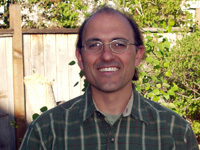
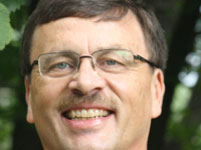 by Kevin Proescholdt
by Kevin Proescholdt
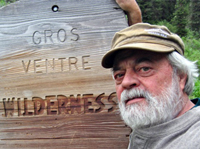
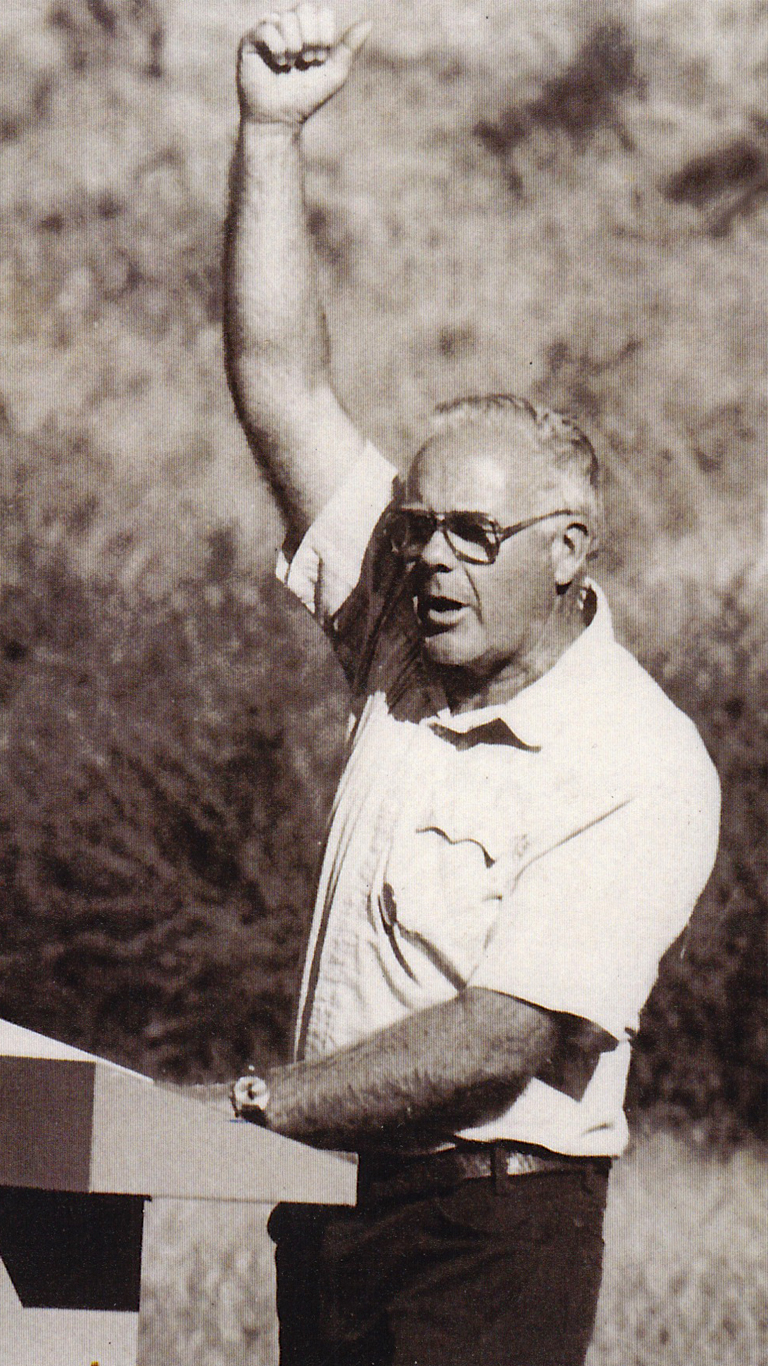
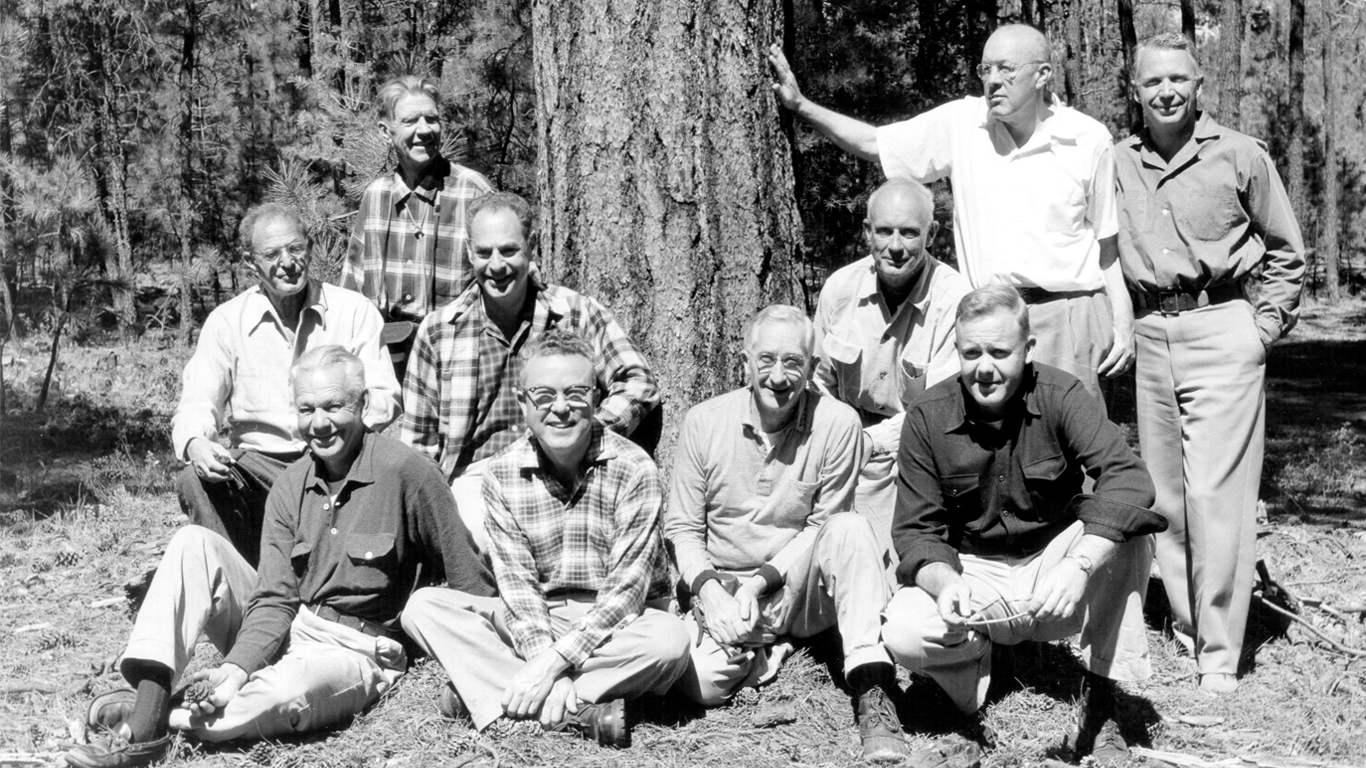

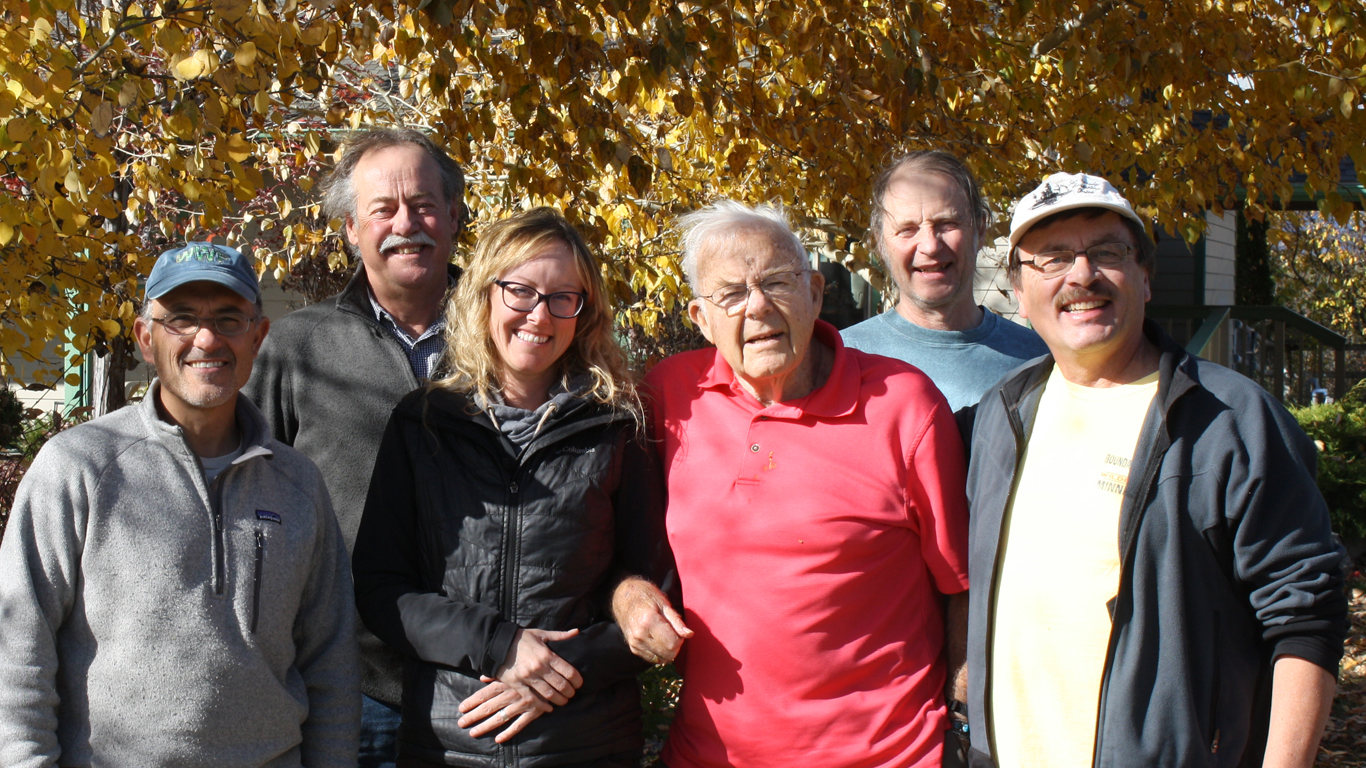
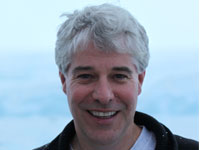
 by Louise Lasley
by Louise Lasley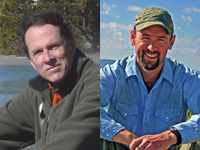 By: Martin Nie and Christopher Barns
By: Martin Nie and Christopher Barns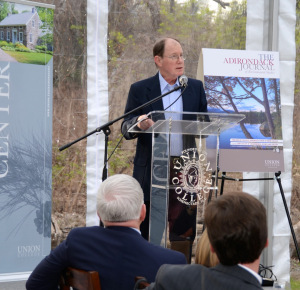
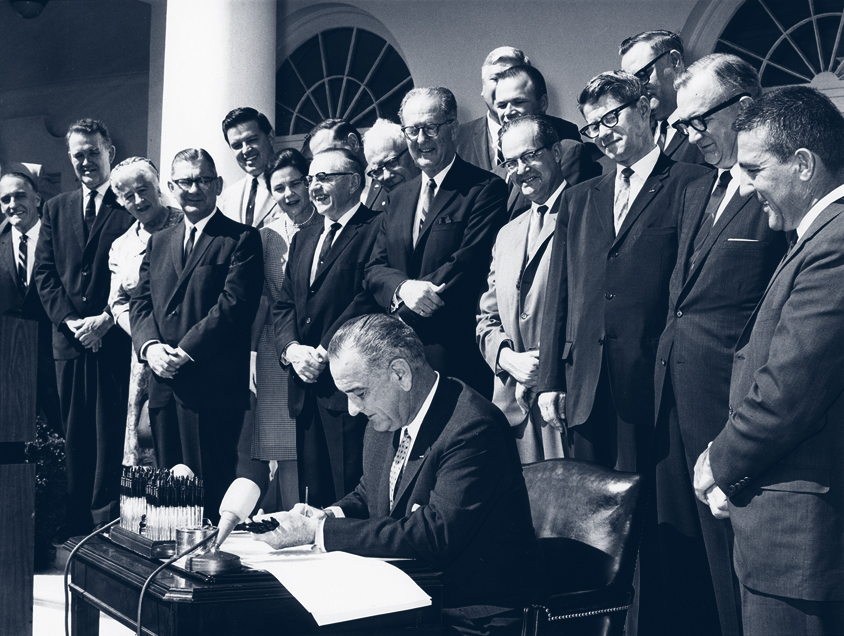
-09-03-14-2.jpg)

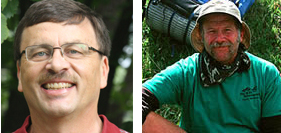 Christopher Solomon got it wrong in so many ways in his July 6 New York Times editorial, “Rethinking the Wild: The Wilderness Act Is Facing A Midlife Crisis”. The history of the wilderness movement and of the 1964 Wilderness Act shows how wrong and myopic he was. In fact, the visionary Wilderness Act is needed now more than ever.
Christopher Solomon got it wrong in so many ways in his July 6 New York Times editorial, “Rethinking the Wild: The Wilderness Act Is Facing A Midlife Crisis”. The history of the wilderness movement and of the 1964 Wilderness Act shows how wrong and myopic he was. In fact, the visionary Wilderness Act is needed now more than ever.